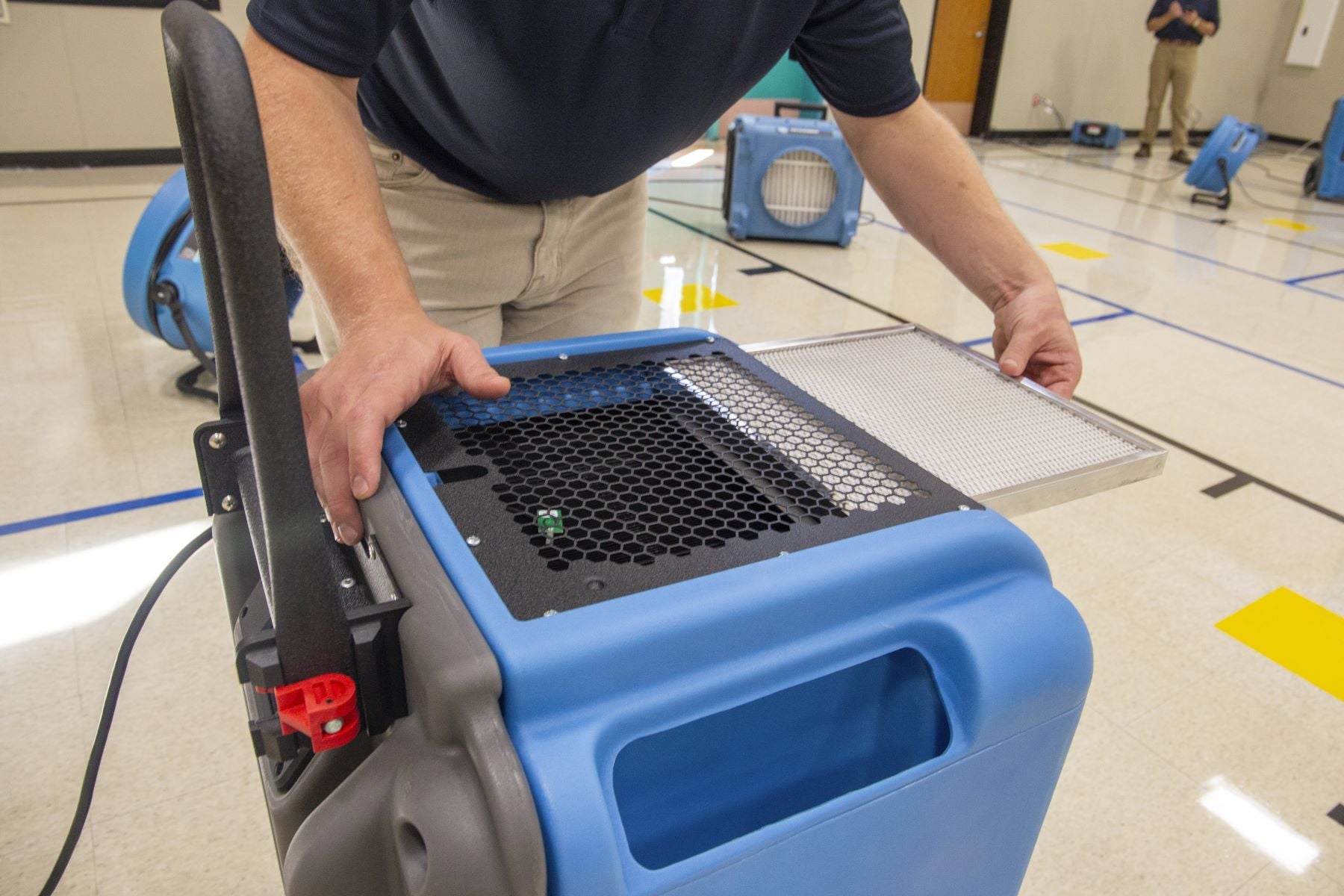By TJ Grim, Ready 2 Respond Trainer
Regular equipment checks and preventive maintenance are among the clearest indicators of true emergency preparedness. In addition to having a written response plan, a trained team, and the ability to return to operations quickly after water damage, keeping drying equipment in top condition is a vital part of the readiness equation.
Facilities teams that prioritize routine maintenance of water extractors, dehumidifiers, airmovers, and other drying equipment are better positioned to act quickly – minimizing downtime, limiting damage, and protecting indoor air quality.
Why Equipment Maintenance Matters
During a water event, there’s no time for last-minute troubleshooting. A blocked pump on a dehumidifier or a clogged filter in an air scrubber can delay response and leave wet materials vulnerable to additional damage plus mold and microbial growth. Proactive maintenance helps identify wear and tear before failure occurs – giving teams the confidence that equipment will work when it matters most.
Preventive maintenance also extends the lifespan of equipment and helps facilities avoid costly repairs or premature replacement.
Best Practices for Key Tools
A structured preventive maintenance routine helps ensure all drying equipment is ready for deployment at a moment’s notice. While each piece of equipment has its own specific needs, some best practices apply across the board:
- Inspect electrical cords and plugs for signs of fraying or damage; replace as needed to reduce risk of electrical hazards.
- Clean exterior surfaces to remove dust and debris that can interfere with operation or airflow.
- Check wheels and casters for proper movement and wear – especially for mobile units used across multiple buildings or floors.
- Check power switches and control panels to confirm that all functions are working correctly.
- Label equipment clearly and log service dates to streamline inventory tracking and upkeep.
Equipment-specific checks:
Dehumidifiers:
- Check filters for dust and debris, and replace when dirty or clogged.
- Check for pump functionality and clear any kinks or obstructions in the drain line.
- Inspect coils for signs of freezing, corrosion, or dirt buildup (and clean as needed).
Airmovers:
- Clean grills and fan blades to remove dust and debris.
- Run airmover and listen for sounds that could indicate damaged fan blades.
Extractors:
- Check power cords, hose fittings, and float valves for wear, cracks, or obstructions. Ensure filters are clean and secure.
- Clean thoroughly after each use – filter basket, recovery tank, and interior parts.
- Vacuum or wipe fan grills, exhaust vents, and HEPA filters to avoid reduced efficiency.
Air Scrubbers:
- Replace HEPA filters and prefilters on schedule or sooner if used in dusty or high-particulate environments.
- Replace carbon filters immediately before odor removal projects, as carbon pellets’ effectiveness degrades with exposure to air.
- Test airflow output and listen for noises that might indicate motor issues.
- Check that seals and housings are tight to ensure that contaminated air won’t bypass them.
Establish a Reliable Equipment Check Cycle
Develop a maintenance cycle tailored to manufacturer recommendations and how often equipment is used. While quarterly checks are common, brief inspections before and after each use can help catch early signs of issues. Be sure to include:
- Visual inspections
- Functional testing
- Filter replacements
- Documentation of any repairs or replacements
Factor in seasonal risks as well – such as checking for rodent intrusion during colder months, dust and debris after summer construction projects, and moisture buildup in storage areas during humid seasons.
Contact the Ready 2 Respond team for help in assessing your facility’s response readiness, identify any gaps in planning, and optimize training strategies. For facility management tips, follow us on LinkedIn and subscribe to our Facility Insights newsletter.


Summer on Campus: Reducing Moisture Hazards
Resilient Leadership: Guiding Facilities Teams through Challenges